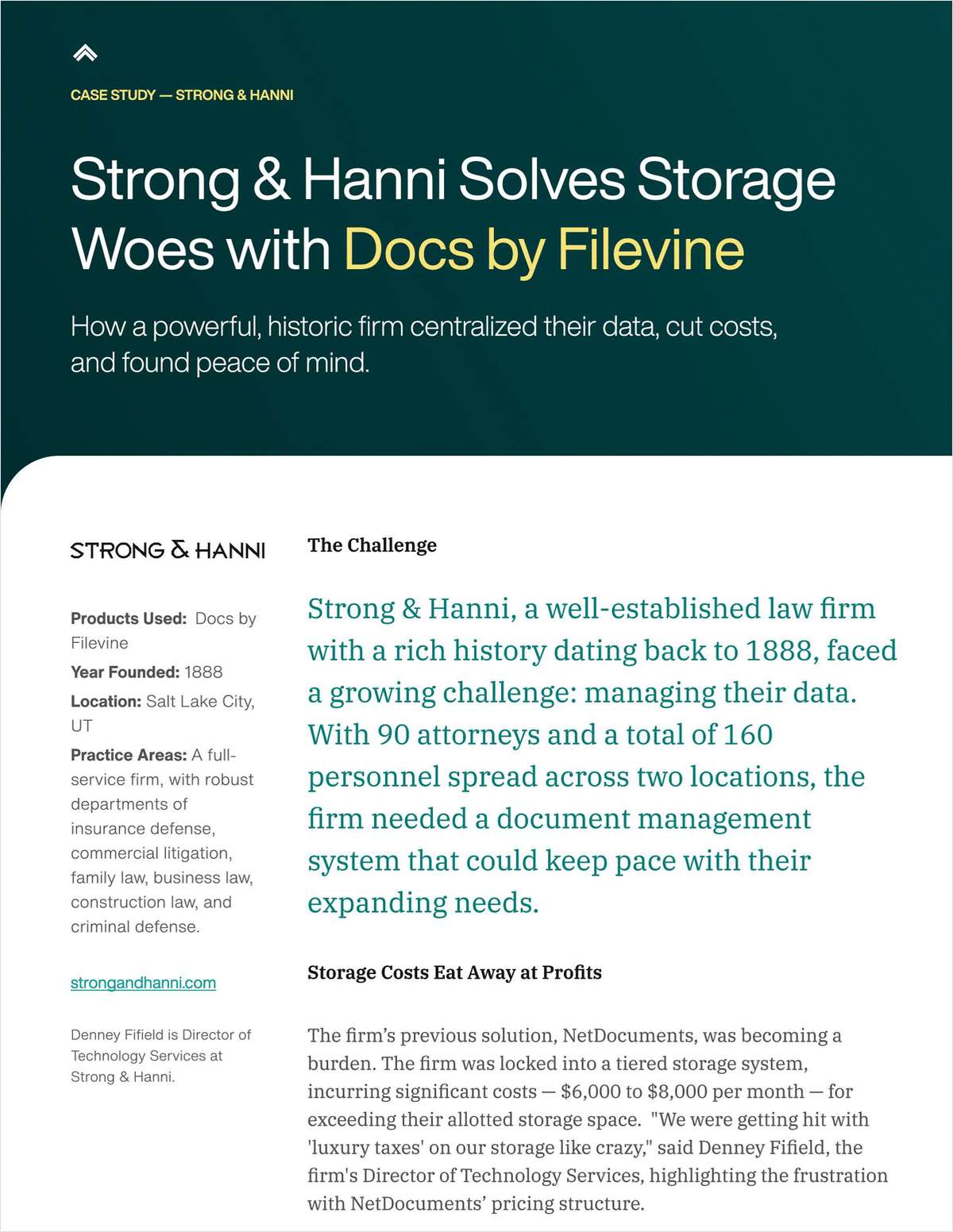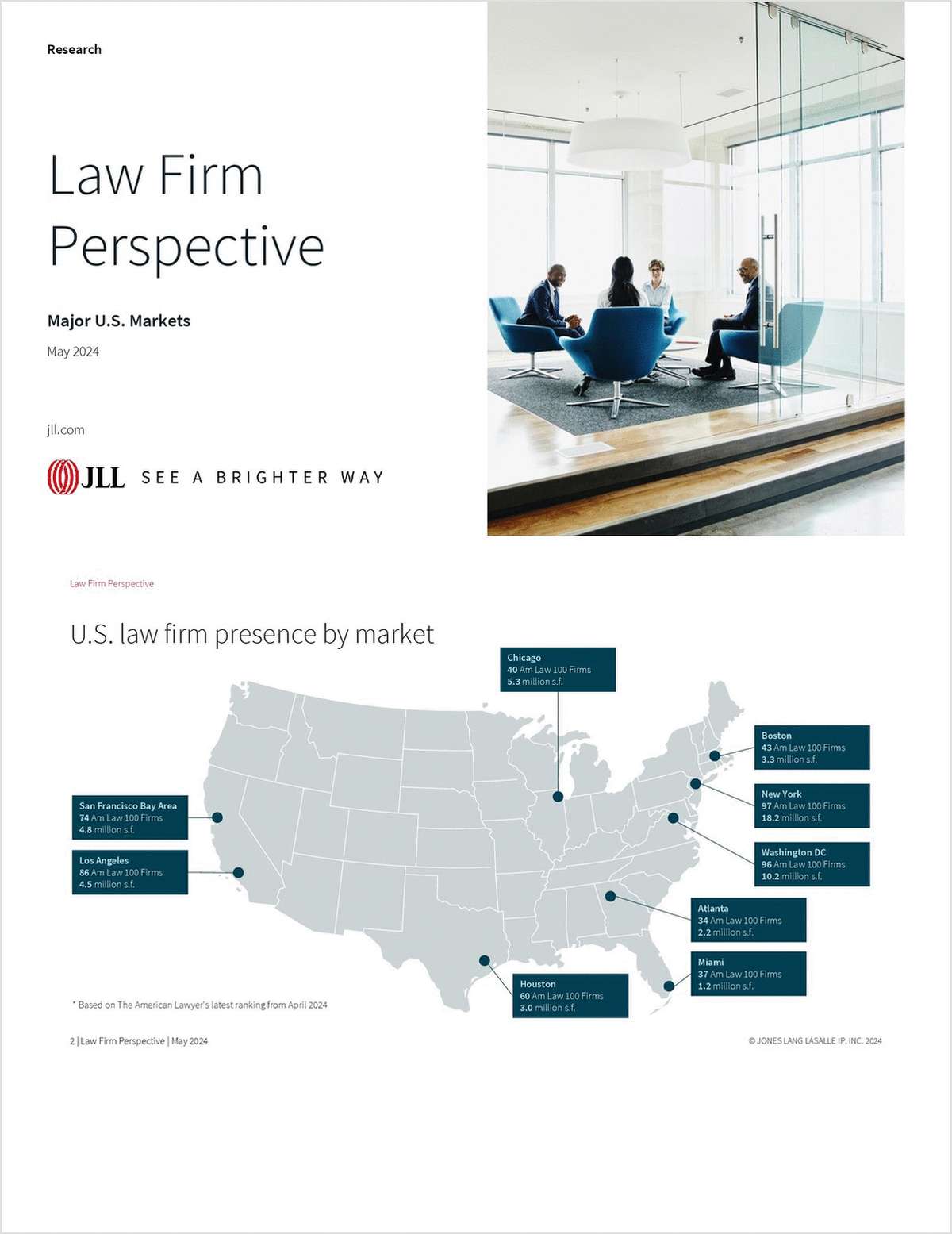Change at the Top? Many Law Firms Remain Unprepared
In a recent survey, one-third of large firms polled said they have no succession plan in place for either their leadership or client teams.
December 28, 2017 at 03:03 PM
5 minute read
 Photo: Sentavio/Shutterstock.com
Photo: Sentavio/Shutterstock.com
In October, Angela Styles was voted out as chair of Washington, D.C.-based Crowell & Moring, then left the firm to join Bracewell's Washington, D.C., office. Styles declines to speak about the circumstances of her abrupt departure from the firm she had practiced at for 10 years, and where her three-year term still had several months to run. The partnership named partner Philip Inglima as her successor.
Just a couple weeks later, DLA Piper's global co-chair Juan Picon announced that he was leaving the firm for Latham & Watkins' Madrid office. Picon had been appointed senior partner of DLA Piper International, which comprises the firm's operations outside the United States, in March 2016.
Such abrupt announcements of leadership changes at Am Law 200 law firms are rare. “Most sudden transitions are not as sudden as the public thinks it is,” says Brad Hildebrandt of Hildebrandt Consulting, saying that many such management shifts are actually anticipated internally well in advance.
But when a truly unexpected exit occurs, it creates challenges for firms as they manage the shift in leadership and deal with the message it sends outside the firm to clients and potential recruits, among others. The best way to avoid problems, law firm consultants say, is to do succession planning to prevent a leadership vacuum.
“Always have a plan,” says Kent Zimmermann, a Chicago-based consultant at Zeughauser Group.
The problem is that many firms don't. In a recent ALM Intelligence survey of almost 120 large law firms, a third of respondents noted that they do not have a succession plan for either firm leadership or client teams.
Nearly 40 percent of those without a succession plan for firm leadership said that the lack was “not an immediate concern,” and about one in six said it was “too sensitive an issue to discuss with firm leaders.” More than 40 percent of respondents said their firm planned ahead for leadership succession only a year or two in advance, or less.
“Many law firms are not formalizing their succession planning process, in direct contradiction to the very same advice they give clients,” says ALM Intelligence senior analyst Daniella Isaacson.
Short of succession planning, firms should at least have provisions in their partnership agreement to dictate how a new managing partner would be selected in the event of an unanticipated departure. “What you want to avoid is an emergency where there's nobody in place. There's always someone around who can take over. There's a management committee,” Hildebrandt says.
That's what happened in 2009, at Dallas' Thompson & Knight, when longtime managing partner Pete Riley had to step down due to illness. His then-partner Jeffrey Zlotky, who had served multiple terms on Thompson & Knight's management committee, assumed the managing partner role; he expected to have a short term, until Riley regained his health, but Riley died a month later, of complications related to cancer. Zlotky ended up serving three years as managing partner, and quickly discovered that he could not manage the firm and practice full-time. “Part of being a managing partner at any firm with multiple offices involves being on the road. … It doesn't leave you time to be fully accessible to clients,” Zlotky says, noting that he continued to strategize for clients but the day-to-day duty fell to other partners. (In 2015, Zlotky left the firm to become a partner and general counsel at NPG Energy Capital in Irving.)
Hildebrandt says it's a good idea for firms to re-examine a leader's responsibilities and role when there's a transition in leadership, and to consider structural changes in how the firm is managed.
Wilson Sonsini Goodrich & Rosati did just that when the California firm announced on Oct. 31 that corporate partner Katharine “Katie” Martin would take the reins from longtime leader Larry Sonsini. Martin will serve as chair of the firm immediately after being elected to head the firm's 10-member board. But the firm will no longer have a “firm chairman,” the position Sonsini held for a long time, because that role is being replaced with a new leadership structure that has the governing board working closely with the managing partner. Sonsini will stay active as senior and founding partner, the firm says.
“Sonsini had been leading it forever. The firm may be in a different place and need a different leader,” says Hildebrandt.
William Cobb, a firm consultant in Houston at Cobb Consulting, says he would advise firms to not worry too much about external marketing when a leadership change occurs. What's more important is to pay close attention to internal marketing: If a leader departs and takes the firm's vision with him or her, leaving only a “mucky cloud,” the risk is that lawyers will then start to re-evaluate if the firm is where they want to practice, Cobb says.
Do clients really notice a change in leadership? Peter Zeughauser, a Newport Beach, Calif., consultant who founded Zeughauser Group says probably not, because the vast majority of clients don't have any contact with a firm's chair or managing partner, and may not even know who these executives are.
Zeughauser says DLA handled public statements well in reference to Picon, who stepped down as senior partner and global co-chair, but said he would remain at the firm for a time. “DLA did a pretty good job. They didn't denigrate Juan at all,” he says. He advises firms to be candid—within limits—in public comments: “You acknowledge it's a loss, and I think that kind of integrity reflects well on the firm.”
This content has been archived. It is available through our partners, LexisNexis® and Bloomberg Law.
To view this content, please continue to their sites.
Not a Lexis Subscriber?
Subscribe Now
Not a Bloomberg Law Subscriber?
Subscribe Now
NOT FOR REPRINT
© 2024 ALM Global, LLC, All Rights Reserved. Request academic re-use from www.copyright.com. All other uses, submit a request to [email protected]. For more information visit Asset & Logo Licensing.
You Might Like
View All
The Law Firm Disrupted: Quality Partner Training—The Exception or the Rule?

Skadden Lures Paul Weiss Marketing Pro Luke Ferrandino as Longtime CMO Retires
3 minute read
To Woo Law Firms, Legal Training Platforms Are Combining Hands-On and Online Learning

Cleary Creates Nonequity Partner Tier, Calling for 'Innovation and Adaptation'
5 minute readTrending Stories
Who Got The Work
Michael G. Bongiorno, Andrew Scott Dulberg and Elizabeth E. Driscoll from Wilmer Cutler Pickering Hale and Dorr have stepped in to represent Symbotic Inc., an A.I.-enabled technology platform that focuses on increasing supply chain efficiency, and other defendants in a pending shareholder derivative lawsuit. The case, filed Oct. 2 in Massachusetts District Court by the Brown Law Firm on behalf of Stephen Austen, accuses certain officers and directors of misleading investors in regard to Symbotic's potential for margin growth by failing to disclose that the company was not equipped to timely deploy its systems or manage expenses through project delays. The case, assigned to U.S. District Judge Nathaniel M. Gorton, is 1:24-cv-12522, Austen v. Cohen et al.
Who Got The Work
Edmund Polubinski and Marie Killmond of Davis Polk & Wardwell have entered appearances for data platform software development company MongoDB and other defendants in a pending shareholder derivative lawsuit. The action, filed Oct. 7 in New York Southern District Court by the Brown Law Firm, accuses the company's directors and/or officers of falsely expressing confidence in the company’s restructuring of its sales incentive plan and downplaying the severity of decreases in its upfront commitments. The case is 1:24-cv-07594, Roy v. Ittycheria et al.
Who Got The Work
Amy O. Bruchs and Kurt F. Ellison of Michael Best & Friedrich have entered appearances for Epic Systems Corp. in a pending employment discrimination lawsuit. The suit was filed Sept. 7 in Wisconsin Western District Court by Levine Eisberner LLC and Siri & Glimstad on behalf of a project manager who claims that he was wrongfully terminated after applying for a religious exemption to the defendant's COVID-19 vaccine mandate. The case, assigned to U.S. Magistrate Judge Anita Marie Boor, is 3:24-cv-00630, Secker, Nathan v. Epic Systems Corporation.
Who Got The Work
David X. Sullivan, Thomas J. Finn and Gregory A. Hall from McCarter & English have entered appearances for Sunrun Installation Services in a pending civil rights lawsuit. The complaint was filed Sept. 4 in Connecticut District Court by attorney Robert M. Berke on behalf of former employee George Edward Steins, who was arrested and charged with employing an unregistered home improvement salesperson. The complaint alleges that had Sunrun informed the Connecticut Department of Consumer Protection that the plaintiff's employment had ended in 2017 and that he no longer held Sunrun's home improvement contractor license, he would not have been hit with charges, which were dismissed in May 2024. The case, assigned to U.S. District Judge Jeffrey A. Meyer, is 3:24-cv-01423, Steins v. Sunrun, Inc. et al.
Who Got The Work
Greenberg Traurig shareholder Joshua L. Raskin has entered an appearance for boohoo.com UK Ltd. in a pending patent infringement lawsuit. The suit, filed Sept. 3 in Texas Eastern District Court by Rozier Hardt McDonough on behalf of Alto Dynamics, asserts five patents related to an online shopping platform. The case, assigned to U.S. District Judge Rodney Gilstrap, is 2:24-cv-00719, Alto Dynamics, LLC v. boohoo.com UK Limited.
Featured Firms
Law Offices of Gary Martin Hays & Associates, P.C.
(470) 294-1674
Law Offices of Mark E. Salomone
(857) 444-6468
Smith & Hassler
(713) 739-1250










